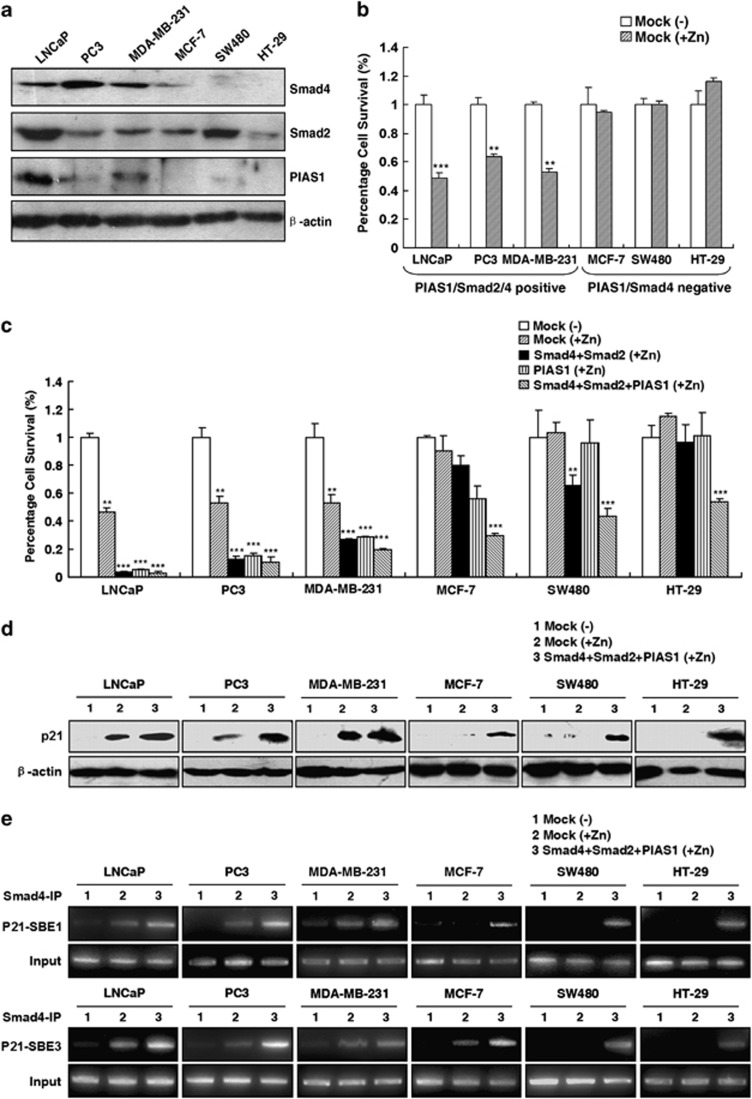Figure 7.
The universal association of the expression levels of Smad2, Smad4 and PIAS1 with the apoptotic sensitivities in various cancer cells. (a) Immunoblot analysis of Smad4, Smad2 and PIAS1 expression in different cancer cell lines including human prostate cancer cell lines LNCaP and PC3, breast cancer cell lines MDA-MB-231 and MCF-7, and colon cancer cell lines SW480 and HT-29. (b) Cell survival profile in response to 150 μM zinc treatment for 24 h in LNCaP, PC3, MDA-MB-231, MCF-7, SW480, and HT-29 cells. Columns, mean (n=3); bars, S.D. **P<0.01. ***P<0.001, versus mock-transfected group in the absence of zinc for each cell line (Student's t-test). (c) Zinc-induced cell survival inhibition attenuated by the overexpression of Smad2/Smad4 and PIAS1 alone or together. Percentage of surviving cells transfected with empty vector or Smad4/Smad2 and/or PIAS1 plasmids response to zinc treatment is normalized against the cells transfected with the empty vector without zinc treatment for each cell line. Columns, mean (n=3); bars, S.D. **P<0.01. ***P<0.001 (one-way ANOVA). (d) Attenuation of p21WAF1/Cip1 expression by the overexpression of Smad2/Smad4 and PIAS1. Percentage of surviving cells transfected with empty vector or Smad4/Smad2 and/or PIAS1 plasmids response to 150 μM ZnSO4 for 24 h. The p21WAF1/Cip1 levels were examined by immunoblot analysis with either p21WAF1/Cip1 or β-actin antibody. (e) Attenuation of zinc-induced Smad4 occupancy on the p21WAF1/Cip1 promoter by the overexpression of Smad2/Smad4 and PIAS1. ChIP assays of Smad4 occupancy on the p21WAF1/Cip1 promoter were performed with anti-Smad4 or IgG antibody and then analyzed by p21 promoter-specific primers

